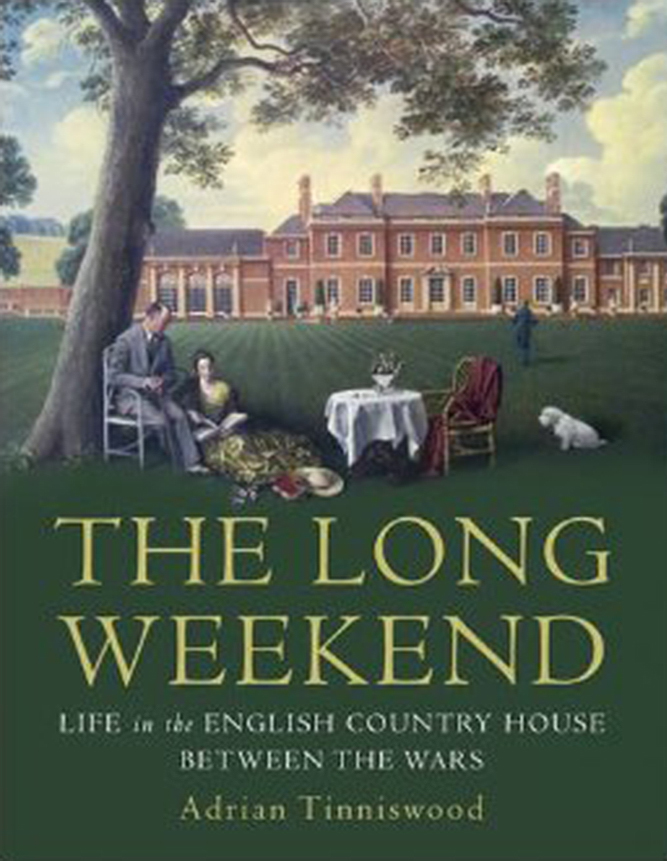Book of the week: The Long Weekend: Life in the English Country House Between the Wars
Giles Waterfield finds this new history of the English country house to be brimming with both architectural detail and social insight.


The Long Weekend: Life in the English Country House Between the Wars Adrian Tinniswood (Jonathan Cape, £25)
Adrian Tinniswood’s highly enjoyable book celebrates a period in which, according to accepted views, ‘the shadows lengthened on the lawns of a thousand stately homes across the nation’ as houses ‘were deserted and dismantled and demolished, their estates broken up, their oaks felled and their parks given over to suburban sprawl’. Not so, says Mr Tinniswood.
Many old properties were indeed sold after the First World War, with land sales reaching record levels in 1918–19, historic rooms sold across the Atlantic and houses stripped and gutted. It was the 1940s and 1950s that really damaged the stock of country houses, however; in the interwar period, they remained resilient, even if changed.
The book is part architectural and part social history. Mr Tinniswood detects several trends in the architectural treatment of country houses, some of them initiated before 1914, notably the restoration (with varying degrees of accuracy) of medieval and Tudor buildings. Castles near London were in vogue, as at Allington, Leeds, Herstmonceux, Hever and Saltwood—a splendidly varied and picturesque group of buildings, restored by a splendidly varied and picturesque group of patrons.
Related to these were Arts-and-Crafts houses such as Rodmarton Manor, begun before the First World War, but only completed in 1929. A more novel form of historicism was the Georgian Revival, as shown in the restoration of old buildings at Ditchley Park (‘quiet grandeur, opulence without pomp’) or Kelmarsh Hall, remodelled by the ultra-stylish Michael and Nancy Tree (typical of the Anglophile Americans who adorn these pages).
The author is at his knowledgeable best when he describes the remarkable rise of the interior decorator: the Post Office directory to London listed four in 1913; in 1921, there were 122. The account of Eltham Palace, as rebuilt for Stephen and Ginie Courtauld by the slightly mysterious Marchese Malacrida, is appropriately sparkling.
Revivalism was not the only trend. New technology and modern forms of fun played a prominent part. The installation of electricity was to be expected, but many owners also wanted squash courts and swimming pools. several outstanding Modern Movement houses were erected, such as High and Over (‘not what a country house is supposed to look like’) by Amyas Connell for the young classical archaeology professor Bernard Ashmole.
Sign up for the Country Life Newsletter
Exquisite houses, the beauty of Nature, and how to get the most from your life, straight to your inbox.
At Joldwynds in Surrey, Oliver Hill designed for a barrister and his wife ‘arguably the greatest modernist country house of them all’, with 12 bedrooms and five sitting rooms. Mr Tinniswood illuminates the often difficult relations between clients and architects—Hill’s clients hated their house and sold up. It’s a pity, however, that Joldwynds isn’t illustrated: the publishers have been stingy over photography.
Gossip plays an important role, with many familiar celebrities such as Consuelo Vanderbilt, Edward, Prince of Wales (with the Royal Family described at almost excessive length), Harold Nicolson and Vita Sackville-West, Philip Sassoon, Gerald Berners and Cecil Beaton. With his keen eye for the droll anecdote and revealing apercu, Mr Tinniswood conveys what it must have been like to inhabit such houses.
The second part of the book focuses on social life: house parties, the political weekend party and the high level of domestic service, which continued up to 1939.
The book begins and ends with a death, but there’s a great deal of life in between. The ending is perhaps unnecessarily mournful —‘she mourned for a past. For a way of life. she mourned for an England. The long weekend was over’—and there’s no mention of the revival of the country house in the 1960s and beyond. However, this is a delicious cocktail of a book, combining many ingredients and presenting an informed survey of the interwar years as seductively as that period (at least in this rarified sphere) demands.
Country Life is unlike any other magazine: the only glossy weekly on the newsstand and the only magazine that has been guest-edited by HRH The King not once, but twice. It is a celebration of modern rural life and all its diverse joys and pleasures — that was first published in Queen Victoria's Diamond Jubilee year. Our eclectic mixture of witty and informative content — from the most up-to-date property news and commentary and a coveted glimpse inside some of the UK's best houses and gardens, to gardening, the arts and interior design, written by experts in their field — still cannot be found in print or online, anywhere else.

